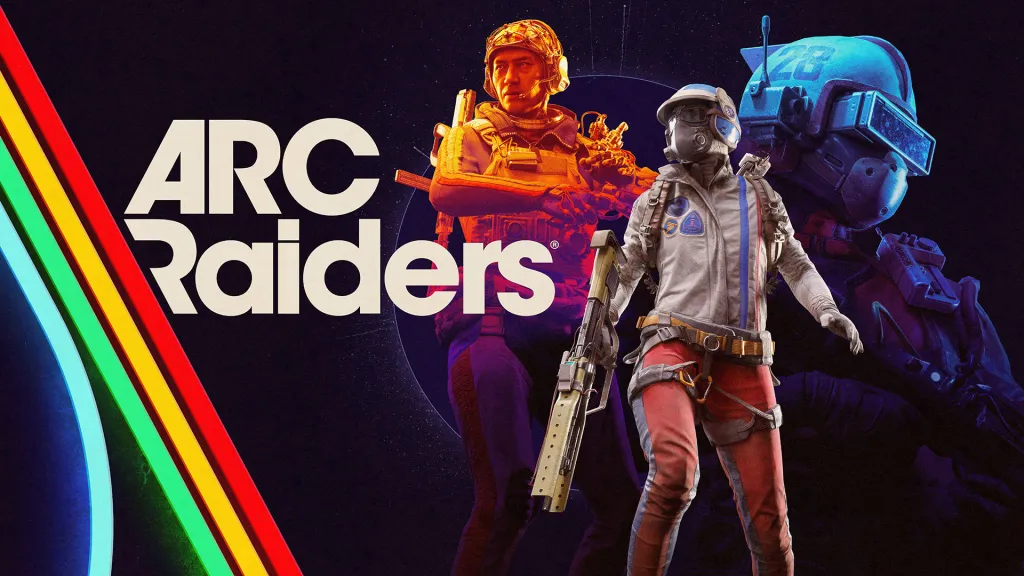Copyright The Mercury News

Faced with dozens of choices each week, gamers have an embarrassment of riches this holiday season, and developers face bigger challenges. With so many titles fighting for attention, it’s more difficult than ever to break through the noise. It’s not enough to have engaging gameplay. The timing of the release, the visuals, price and momentum matter just as much. “Arc Raiders” is proof of that. The extraction shooter has launched to dramatic buzz, and it’s a fantastic game. It also reminds me of a game that launched earlier this year, Bandai Namco’s “Synduality: Echo of Ada.” ‘SYNDUALITY’ vs. ‘ARC RAIDERS’ The titles share much of the same DNA. They’re both player vs. player vs. environment shooters, in which players explore a postapocalyptic landscape and scavenge for materials. They face threats from enemies milling about. In “Arc Raiders” case, survivors battle robots called Arcs, while in “Synduality” the player-piloted mechs fend off mutated creatures called Enders, but that’s not the only threat. In both games, the goal for each trip to the surface is to bring back the harvested resources to a base, so players can use them for facility upgrades that lead to the creation of better gear. The big problem is that “Arc Raiders” and “Synduality” throw more than a dozen players onto a map, and that leads to the magic of extraction shooters. Players meet others and don’t know if they’re friend or foe. It builds tension because players might not know their intention while also worrying about the haul on their backs. It can lead to temporary alliances, friendships and betrayals, sometimes all in one match. It creates moments of emergent gameplay, where players make their own stories in the chaos of the game. A MORE POLISHED EXPERIENCE So why does one have so much success while the other didn’t? “Arc Raiders” gathered momentum after its release, following several test runs that built positive word of mouth, and it launched with a wealth of content and a more comprehensive roadmap. From launch, it felt like a more polished experience, though I do prefer the anime art-style and mecha conceit of “Synduality.” Much of that has to do with “Arc Raiders” developer Embark Studios’ experience. The Swedish team has veterans from the “Battlefield” series, and they already have one project out in “The Finals.” The team knows how to create multiplayer experiences and optimize elements, particularly on the audio side, that enhance the gameplay. “Arc Raiders” leans exquisitely into sound design and makes it just as important as the visuals. Players have to listen for Arc robots, which can ambush players from the skies or overwhelm them on sight. In a world, where danger is around every corner, hearing the buzz of a flying drone or the servo from a Leaper can be the difference between survival and surrender. EXCELLENT USE OF AUDIO That extends to other players. When scavenging, players need to be aware of their surroundings, but when searching drawers and cabinets, it takes players out of the world screen and into the menu as they wait for the results of their search. The sound of footsteps on concrete is a way to know whether a hostile player is sneaking up behind you. Embark Studios also uses proximity chat. Players can hear others talking based on how close they are on the map. That again is another wrinkle that adds to the emergent gameplay as players can use that audio clue for an advantage if they’re hostile or they could make a temporary ally if they’re friendly. All of this creates an experience that can turn on a dime. Players can scavenge for parts in a low-key run that immediately intensifies when another player comes around and starts a gunfight. Players can feel great escaping an ambush with a key upgrade piece, but in the next trip, they can lose it all in an ambush. The fact that players can lose a treasured gun or other equipment after surrendering again heightens the tension, but “Arc Raiders” gives players opportunity to recover with the help of a chicken that gathers resources and a free loadout option that grants them starter items so they don’t have to sacrifice their better gear. The campaign rewards players who have stuck with the game by creating a progression system. Players gain experience points for actions on each run, and they earn enough to gain a level and a skill points. Players use this on a skill tree, but they have to carefully allocate their skills because right now “Arc Raiders” doesn’t have an easy way to reassign points beyond the difficult Expeditions. If players make a mistake, they have to live with it, and that can be brutal. Despite that issue, “Arc Raiders” brings the extraction genre to a wider audience than other titles before it by mitigating the more frustrating aspects of the category, while also introducing improvements that strengthens player-led adventure and interaction. It’s an id ‘Arc Raiders’



